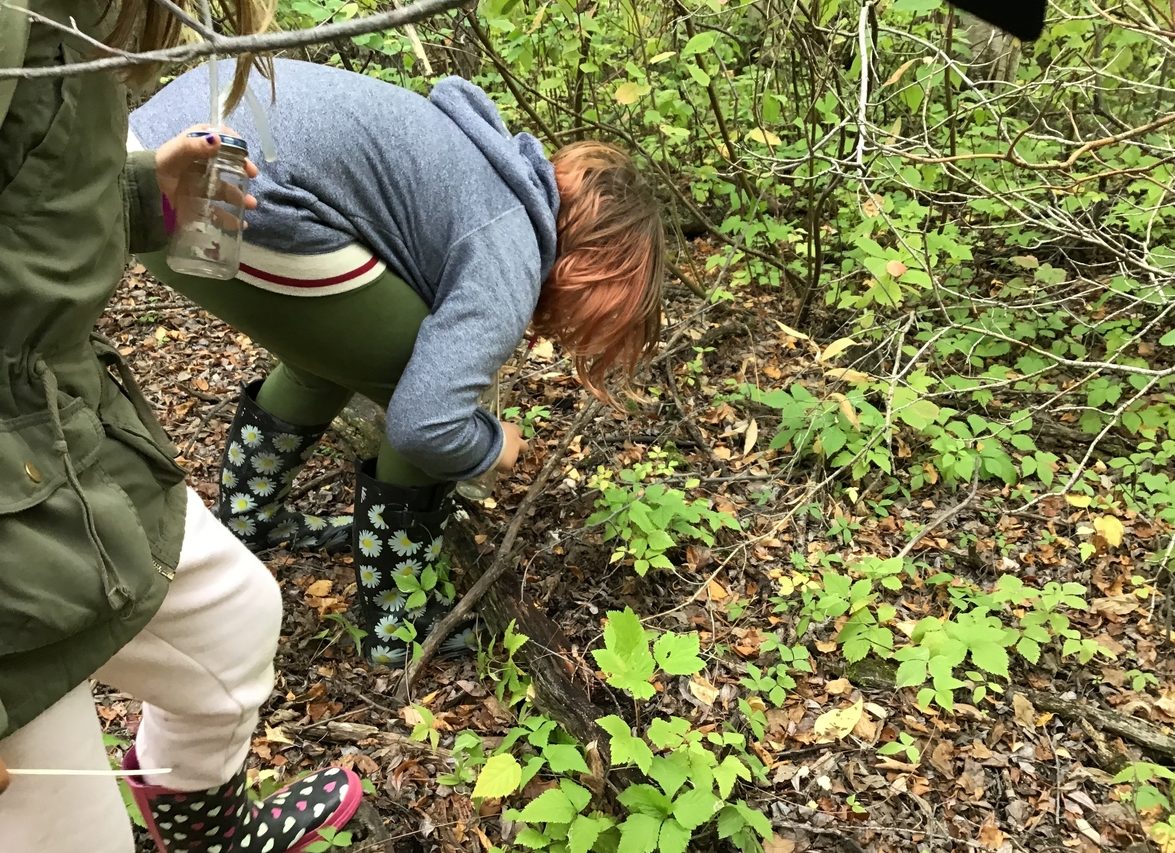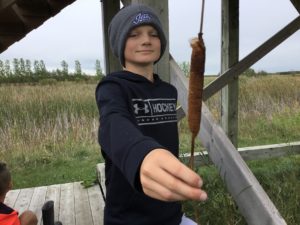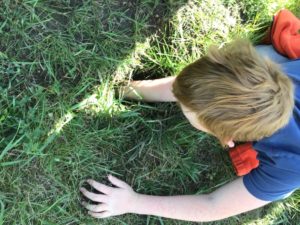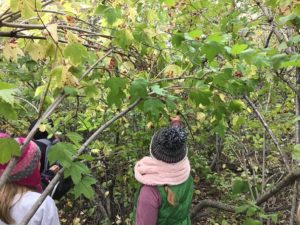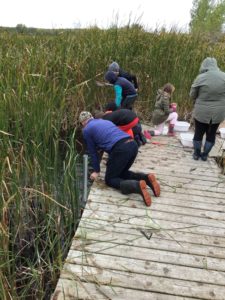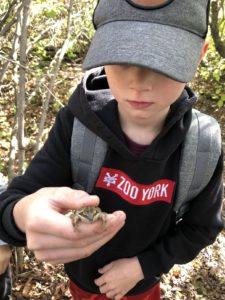“…we can now assume that just as children need good nutrition and adequate sleep, they may very well need contact with nature…The health of the earth is a stake as well. How the young respond to nature, and how they raise their own children, will shape the configurations and conditions of our cities, homes — our daily lives.”
– Richard Louv in Last Child in the Woods – Saving Our Children from Nature-Deficit Disorder
Recently, learners from two gr. 4 classes at Mitchell Elementary visited Tourond Creek Discovery Centre.
Nadia: “I wonder how many living things there are in the pond.” Lorraine: “What would happen if we put the dipper to the bottom of the pond?” Ava: I wonder how bugs and insects are different from each other.”
Noticing, wondering, suggesting possibilities — these all seem like a natural fit for all learners, both the student and the teacher learners that begin to touch nature.
Elizabeth: “I found an animal home.” Hannah: “There are snake dens.” Mason: “I’ve seen snake dens.” Jocelyn: “Maybe an animal tried to burrow here – I could do this all day!”
The joy of discovery that fills the air as the learners interact is the music and lyrics of learning.
Hannah: “White-tailed deer live here so other predators won’t find them.” Jocelyn: “There’s a tunnel in there for sure — I knew there were foxes here.”
Building ideas and making conclusions help consolidate the learning — it’s all making memories– knowledge, sensory and emotional memories .
Mason: “I ate a slug. It was slimy when I swallowed it.” Others around: “GROSS!!”
Using all the senses?
By documenting the learning with iPad photos and recording the voices of students, we carry the learning forward into our four-walled spaces where they can be made visible (actually, physically on the walls) as memories, more wonderings, inquiry pursuits and new knowledge that can be further consolidated in future learning experiences. Documenting the voices of students honours them as learners. When they see that their observations, questions and ideas help shape further learning experiences, they come to understand that they are valued co-learners. How might their engagement increase, both intellectually and emotionally?
Both Diana H in 4H and Loretta F, the science teacher for 4M, are building on the provocation at TCDC to inform their planning for learning in their Habitats Unit. Loretta is planning around some essential questions: How might noticing (observing) and wondering help us make connections to the world around us? How could our actions as humans affect the habitats we live in? Jen Martens, 4M’s homeroom teacher, told me about how her students were developing writing based on the students’ experiences and that she could learn from them authentically because she had not been to TCDC herself.
Cory’s and Gus’ gr. 4 classes were bound for TCDC later that week, with much more to be discovered. Together we planned the learning experiences but the learners do the absorbing through touching (and tasting?!?) nature. Whether it is TCDC , Rosenthal Nature Park or the corners of your school yard, it is all part of the outdoor classroom that can be explored. MES is taking time to develop spaces on their schoolyard that will invite learning in nature that is close at hand. Together, teachers at MES are exploring ways these places of discovery can impact their learners.
If you’re wondering about how this whole experience went, talk to Diana or Loretta, or better yet, try a Google Hangout to talk to their students directly. I’ll help you set up that interaction.
Joleen, looking from the hill: “Woa, what a view.” Vander, looking at some aged animal dropping: “Looks like a powdered donut.”
